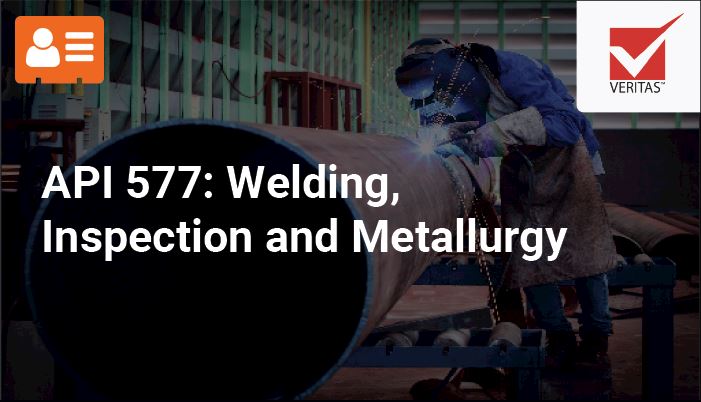The Value of Thorough Welding Evaluation in Industrial Applications
In the world of industrial applications, the relevance of precise welding examination can not be overstated. As we discover the multifaceted advantages of diligent welding inspections, one have to take into consideration the broader effects on security, integrity, and cost-effectiveness in commercial operations.
Enhancing Architectural Stability
When it concerns welding assessment in commercial applications, boosting architectural stability is paramount. The primary goal of welding assessment is to make sure that the welds can birthing the anticipated loads and stresses they will certainly come across in service. This involves a detailed assessment of the welds' measurements, placement, and total high quality, guaranteeing they meet the specified standards and codes. Exact inspection approaches, such as visual inspection, ultrasonic screening, and radiographic screening, are essential in determining concerns that can compromise the framework's safety and security and functionality - Welding Inspection Madison.
The value of maintaining architectural honesty in welded structures can not be overstated. Improperly performed welds can result in catastrophic failures, causing costly repairs, downtime, and also endangerment of human lives. Consequently, inspectors play an essential duty in the lifecycle of industrial elements, offering guarantee that the welding procedure provides the desired strength and toughness.
Additionally, advanced modern technologies, such as phased range ultrasonic screening and digital radiography, offer enhanced capacities in identifying possible weak points, enabling corrective actions prior to problems rise. By prioritizing the integrity of welds with meticulous inspection, sectors can ensure functional performance and expand the long life of their framework.
Recognizing Welding Defects
Identifying welding defects is a crucial aspect of ensuring the safety and dependability of bonded frameworks. Common welding problems consist of porosity, splits, insufficient fusion, and undercutting.
Proficient examiners use both visual examination and advanced non-destructive testing (NDT) approaches, such as ultrasonic or radiographic screening, to find these issues. The prompt recognition and rectification of welding defects are critical to preserve the architectural honesty and longevity of industrial components.
Making Certain Conformity Criteria
Conformity with well established criteria, such as those given by the American Welding Society (AWS) and the International Organization for Standardization (ISO), makes certain that welds satisfy minimum safety and security and quality demands. These requirements encompass a wide variety of standards, including product specs, welding treatments, and qualification of welders.
Regular audits and assessments are necessary in confirming compliance. Inspectors need to have an extensive understanding of the pertinent standards and be proficient at using different non-destructive testing (NDT) techniques to evaluate weld top quality. By making sure that welding methods line up with conformity criteria, business mitigate the threat of non-conformity, which can cause lawful responsibilities and safety and security risks.
Furthermore, preserving compliance not just safeguards architectural stability but additionally boosts a firm's reputation in the sector. Customers and stakeholders are extra likely to trust fund companies that constantly show a commitment to high quality and security via rigorous compliance. Hence, making certain conformity criteria is an important element in the effective execution of welding in commercial applications.
Lowering Maintenance Prices

The application of sophisticated non-destructive screening (NDT) approaches, including ultrasonic, radiographic, and magnetic particle inspections, boosts like it the capability to discover subsurface imperfections without endangering the architectural honesty of elements. By utilizing these strategies, markets can considerably prolong the life span of their devices, lowering downtime and the linked monetary worry of upkeep activities.
Additionally, a robust welding assessment regime supports the optimization of upkeep schedules, moving from reactive to predictive upkeep approaches. This aggressive strategy not just cuts unanticipated failures yet likewise enhances source allotment, making certain that maintenance initiatives are concentrated and reliable. Ultimately, the investment in extensive welding assessment is countered by the substantial cost savings realized through lowered upkeep needs, adding positively to the overall operational efficiency of industrial ventures.
Improving Precaution
Although security is an extremely important worry in commercial operations, achieving optimal safety and security standards calls for a devoted concentrate on the top quality and integrity of welded structures. Welding examination plays an essential duty in this context, as it makes sure that all joints and links meet rigid security criteria. Comprehensive examinations aid recognize problems such as splits, porosity, or insufficient blend that could jeopardize structural stability. Such issues, if left unaddressed, pose significant threats, possibly bring about tragic failings.
To boost precaution, adopting sophisticated non-destructive testing (NDT) strategies is necessary. Methods like ultrasonic screening, radiographic testing, and magnetic bit assessment permit thorough evaluation without damaging the framework. These technologies enable assessors to identify covert defects early in the building process, helping with timely corrective activities. Executing a robust look at this site quality control system that includes regular training for inspectors and welders makes sure adherence to developed security requirements.
Finally, cultivating a culture of security This Site within the company emphasizes the value of thorough welding assessments. Encouraging open communication and collaboration amongst engineers, welders, and assessors contributes to a shared commitment to safety and security quality. Welding Inspection Madison. In doing so, sectors can protect their operations, shield personnel, and preserve public trust

Verdict
Complete welding inspection is indispensable in commercial applications, significantly enhancing architectural honesty and reliability. Ultimately, the persistent execution of welding evaluations plays an important function in keeping operational performance and safety and security in commercial settings.
As we explore the multifaceted benefits of diligent welding examinations, one must think about the more comprehensive effects on security, dependability, and cost-effectiveness in commercial operations.
The key goal of welding evaluation is to ensure that the welds are capable of birthing the expected stresses and lots they will certainly run into in solution. Effective welding evaluation plays an indispensable function in reducing these costs by making sure the integrity and longevity of welds, thereby alleviating the danger of premature failings.Detailed welding assessment is essential in industrial applications, considerably enhancing architectural integrity and integrity. Inevitably, the diligent execution of welding assessments plays an important function in maintaining functional performance and safety and security in commercial setups.